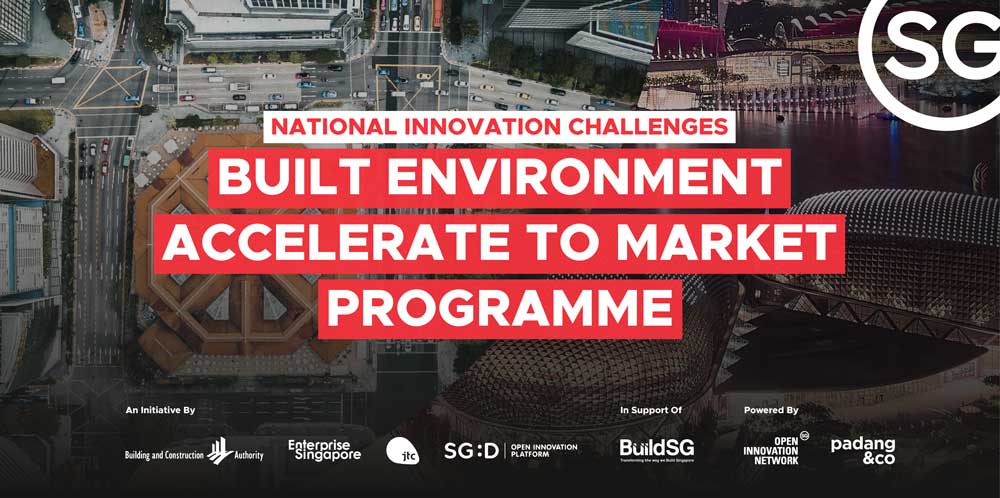
| Challenge Owner(s) |
JTC Corporation, Hongkong Land, Frasers Property, City Developments Limited
|
|---|---|
| Organiser(s) |
Enterprise Singapore, Building and Construction Authority (BCA), JTC Corporation
|
| Industry Type(s) |
Digital/ICT, National Innovation Challenges
|
| Opportunities and Support | Up to S$2,000,000 in co-funding grant support from prototype, deployment to adoption |
| Application Start Date | 22 January 2021 |
| Application End Date | 8 March 2021 |
About Challenge
As the COVID-19 pandemic disrupted the normal course of life and business, it also exposed many opportunities for the industry to innovate and build stronger enterprises going forward.
In the Built Environment sector, there is a need to accelerate the adoption of advanced building technologies to allow for cleaner, higher quality construction that is less manpower intensive. Emerging technology trends such as robotics and artificial intelligence will play an instrumental role in reshaping the Built Environment sector in a post COVID-19 world.
The Built Environment Accelerate to Market Programme (BEAMP) is a multi-agency initiative designed to build a vibrant innovation ecosystem for the Built Environment sector.
Since its inaugural launch last year and over two iterations, BEAMP has created a platform where innovators and Built Environment industry players come together to collaborate and solve key challenges through accelerated product and market development.
BEAMP returns this year to discover new solutions and expand on the Built Environment sector’s potential for disruptive innovation. If you have an innovative solution that can aid the transformation of the sector, this is an opportunity for you to receive test-bedding opportunities with industry players, be mentored by experts, and also secure a funded pilot.
| Challenge Owner(s) | Hongkong Land, JTC Corporation |
|---|---|
| Industry Types(s) | Electronics, Environmental Services, National Innovation Challenges, Real Estate |
Hongkong Land & JTC Corporation
The cleaning of industrial/commercial building façades is done annually and in some cases, half-yearly. The work typically involves a minimum of 3 persons, 2 of whom work at height using a gondola or rope access system, with one safety personnel. The duration needed to complete the cleaning process of a building typically ranges from one to three months.
As part of the process of cleaning, there is further potential for added synergy to also incorporate inspection and repair elements into the gondola or rope access system.
Currently, building façades are required to be inspected on a regular basis . Defects are flagged out by the inspectors and prioritised according to severity for follow-up actions. This challenge seeks to primarily develop an autonomous façade cleaning solution, where integration with automated inspection techniques to guide the system to subsequently perform repair works for minor defects would be an added enhanced feature considered.
What We Are Looking For
An unmanned robotics solution that can replace current manual methods of cleaning, inspecting and repairing can lead to the following benefits:
- Lower the life cycle cost of the building;
- Reduce the manpower requirements for façade maintenance;
- Improve resilience of the building by detecting and repairing building defects early;
- Reduce the safety risk from working-at-height;
- Uniform cleaning of building façades to remove human error with results that are highly replicable on other buildings
Sign up for the latest innovation updates
Customise your preferences to receive updates in industries you're interested in.